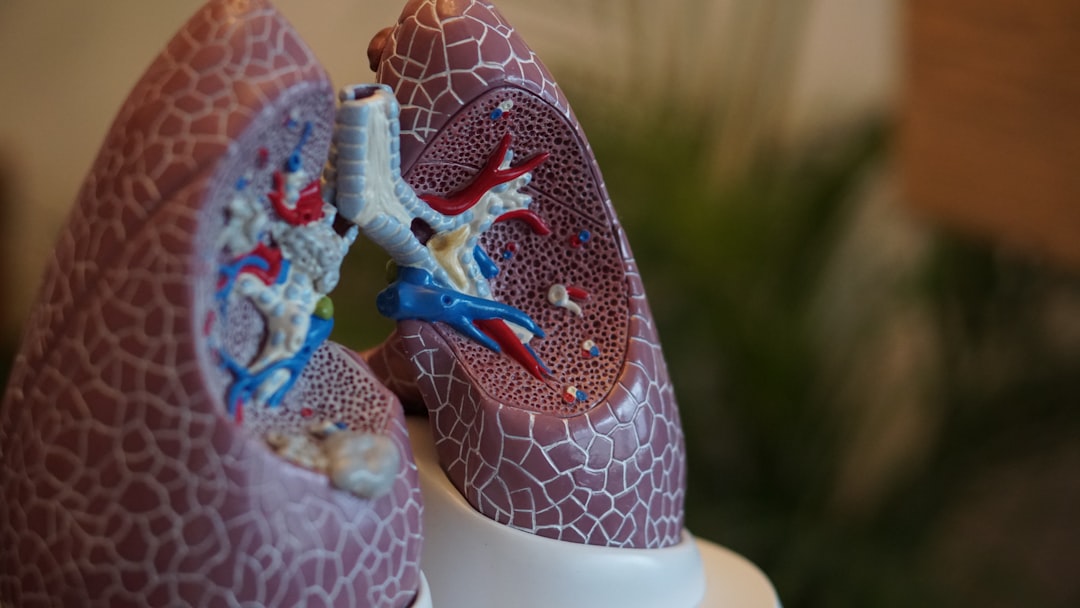What is it about?
Introduction Bezoars are swallowed impacted concretions of indigestible foreign material in the gastrointestinal tract (GIT), most commonly in the stomach. Bezoars have been classified into: phytobezoars (indigestible fruit or vegetable fibres), trichobezoars (hairs), lactobezoars (milk products), and pharmacobezoars (tablets and semi-fluid medications). The most common type of bezoars in children and adolescents is trichobezoar, in contrast to phytobezoar in adults. Rapunzel syndrome (RS) is a rare variety of gastric trichobezoars which has a tail that spreads distally into the small intestine. The long tail had been reported to extend up to the ileocaecal valve in some cases.[1] The RS was named after the long haired maiden, described in the folk tales of the Brothers Grimm in 19th century, a girl imprisoned in the top of a castle, could be liberated only by a prince via climbing her long tresses.[2] Most of RS cases were described in adolescents, while few cases were reported in preschool children. We reported an Egyptian case of RS in a 4-year-old girl presented with generalised oedema, hypoalbuminaemia and epigastic mass. Report of the Case A 4-year-old girl was presented to the emergency department of Mansoura University Children's Hospital, Mansoura, Egypt with lower limbs swelling and epigastric pain. The parents were middle aged with a relatively low socioeconomic standard and have another 8-year-old girl with nephrotic syndrome. Past history was irrelevant. Upon physical examination, the patient's body weight and height were on 5th percentile for age and sex. Pulse and blood pressure were 90 bpm and 90/50, respectively. No clinical signs of malnutrition were found apart from pallor. We noticed puffy eyelids and bilateral soft pitting oedema of both lower limbs up to the thighs. Abdominal examination revealed ascites (positive shifting dullness) alongside with a well-demarcated epigastric mass (10 x 8 cm) which was firm, mobile, non-tender, and dull on percussion. Cardiovascular and respiratory systems examination was normal. Laboratory work-up reported the following results: normal urine analysis (microscopy and protein), full blood count (Hb 8.9 g/dL, white blood cells 6 x 109/L, and platelets 200 x 109/L), blood film (microcytic hypochromic anaemia with reticulocytic count of 0.7%), serum ferritin 6 µg/L, ESR 16/25, and hypoalbuminaemia (serum albumin was 19 g/L). Liver function tests, lipid profile and serum creatinine were within normal levels. Alpha 1-antitrypsin clearance, a sensitive marker for diagnosis of protein-losing enteropathy, was estimated through determination of alpha 1-antitrypsin plasma level, a 24-h stool volume and stool alpha 1-antitrypsin level. Elevated alpha 1-antitrypsin clearance was noted (30 mL/24h); normal reference value ˂ 24 mL/24 h.[3] Abdominal ultrasound revealed a heterogeneous mass related to the stomach. Computed tomography (CT) abdomen confirmed the presence of a heterogeneous solid mass with a mottled gas pattern markedly distending the stomach (Figure 1). The habit of eating hairs and fibres was retrospectively reported by the parents since early infancy. Upper GIT endoscopy was done and revealed a hairy mass that extended from the stomach to the duodenum. A trial of extraction of this mass using a polypectomy snare failed due to the apparently long extension and large size. Surgical intervention became necessary and laparotomy was done with extraction of the mass through a single anterior gastrotomy incision. A large mass casting the duodenum and stomach was extracted with a long tail extending to jejunum (Figure 2) with approximately 60 cm in length. The patient had an excellent postoperative recovery with no complications. Oedema resolved over one month with nutritional rehabilitation. The follow-up alpha 1- antitrypsin clearance was within normal range. Psychiatric evaluation revealed no major psychological disorders. Discussion In trichobezoars, ingested slippery hairs escape peristaltic propulsion and become retained and entangled within the gastric rugae. The gastric acidity induces denaturation of the hair proteins and blackens the hairs by oxidation. Subsequently, hairs become matted with each other and with accumulated food particles, leading to halitosis as a result of colonized bacteria and fermentation of undigested fat.[1] Trichobezoars are commonly found in adolescent females, with only four reported cases in males.[2, 4, 5, 6] Among the seventy eight RS reported paediatric cases, only five cases were 4 years old and younger.[4, 7, 8, 9, 10] Classically, trichobezoars are formed due to trichophagia, which may be related to psychiatric conditions [11] and mental retardation [12], which were not met in our case. Pica due to iron deficiency anaemia as well as childhood neglect are possible explanation in our case.[13] RS in children is relatively rare especially in our locality. This was the first case to be reported in Egypt; while only six cases were reported in other Middle East countries.[13, 14, 15, 16, 17, 18] The most common presenting symptoms in patients with RS are abdominal pain, vomiting, obstruction, peritonitis, intussusceptions and weight loss.[1] In addition, few cases with obstructive jaundice [9], pancreatitis [4, 19], appendicitis [20] and gut perforation [17, 21] had been reported. Abdominal examination typically reveals an upper abdominal mass (Lamerton’s sign).[1] To the best of our knowledge, hypoalbuminaemia had been found in only four paediatric RS cases, none of them developed generalised oedema.[14, 15, 22, 23] This was the first report of a child with RS presented with generalised oedema. Protein- losing enteropathy, poor intake, mal-absorption and bacterial over growth may contribute to hypoalbuminaemia that occurs insidiously taking a long duration. The corner stone for diagnosis of trichobezoars is upper GIT endoscopy.[12] Different imaging modalities are of some help, however, abdominal CT was reported to be more effective than ultrasound and barium meal in revealing concomitant gastric and intestinal bezoars, alongside its proved accuracy in determination of level and degree of intestinal obstruction.[24] The treatment of trichobezoars aims to completely remove the mass and prevent recurrence. Dissolving of the mass by chemicals (coca-cola soft drinks) or endoscopic removal is less likely to be successful in RS cases and large trichobezoars.[10] In the context of expanding interest in minimally invasive surgical techniques, several laparoscopic approaches have been described to remove trichobezoars.[4, 19, 25] Laparoscopy compared to laparotomy was associated with shorter hospital stay, better cosmetic results and fewer postoperative complications. However, open surgery is still the treatment of choice for large trichobezoars due to its advantages including simplicity of the procedure, less time required and feasibility of examination of rest of the bowel for satellite lesions.[10] Mortality is unusual and fatal outcome was documented in four previously described cases.[8, 26, 27, 28] Of the four deaths, two had infectious complications [8, 26, 27] and two showed signs of child neglect and inadequate health care.[8, 28] Recurrence had been previously reported [29] due to improperly treated psychiatric conditions and missed follow-up ; so long term follow-up is required. Naik S, Gupta V, Naik S, et al. Rapunzel syndrome reviewed and redefined. Dig Surg. 2007;24:157-61. 2. Jain M, Solanki SL, Bhatnagar A, et al. An unusual case report of rapunzel syndrome trichobezoar in a 3-year-old boy. Int J Trichology. 2011;3:102-4. 3. Braamskamp M, Dolman K, Tabbers M. Clinical practice. Protein-losing enteropathy in children. Eur J Pediatr. 2010;169:1179-85. 4. Kohler JE, Millie M, Neuger E. Trichobezoar causing pancreatitis: first reported case of Rapunzel syndrome in a boy in North America. J Pediatr Surg. 2012;47:e17-9. 5. Hirugade ST, Talpallikar MC, Deshpande AV, et al. Rapunzel syndrome with a long tail. Indian J Pediatr. 2001;68:895-6. 6. Emre AU, Tascilar O, Karadeniz G, et al. Rapunzel syndrome of a cotton bezoar in a multimorbid patient. Clinics (Sao Paulo). 2008;63:285-8. 7. Phillips MR, Zaheer S, Drugas GT. Gastric trichobezoar: case report and literature review. Mayo Clin Proc. 1998;73:653-6. 8. Mateju E, Duchanova S, Kovac P, et al. Fatal case of Rapunzel syndrome in neglected child. Forensic Sci Int. 2009;190:e5-7. 9. Chogle A, Bonilla S, Browne M, et al. Rapunzel syndrome: a rare cause of biliary obstruction. J Pediatr Gastroenterol Nutr. 2010;51:522-3. 10. Middleton E, Macksey LF, Phillips JD. Rapunzel syndrome in a paediatric patient: a case report. AANA J. 2012;80:115-9. 11. Ozdemir H, Ozdemir ZU, Sahiner IT, et al. Rapunzel Syndrome Case Report: A 13-year-old Girl. Int J Trichology. 2012;4:275-7. 12. Gonuguntla V, Joshi DD. Rapunzel syndrome: a comprehensive review of an unusual case of trichobezoar. Clin Med Res. 2009;7:99-102. 13. Islek A, Sayar E, Yilmaz A, et al. A rare outcome of iron deficiency and pica: Rapunzel syndrome in a 5-year-old child iron deficiency and pica. Turk J Gastroenterol. 2014;25:100-2. 14. Al-Wadan AH, Al-Absi M, Al-Saadi AS, et al. Rapunzel syndrome. Saudi Med J. 2006; 27:1912-4. 15. Rabie ME, Arishi AR, Khan A, et al. Rapunzel syndrome: the unsuspected culprit. World J Gastroenterol. 2008;14:1141-3. 16. Al Wadan AH, Al Kaff H, Al Senabani J, et al. 'Rapunzel syndrome' trichobezoar in a 7-year-old girl: a case report. Cases J. 2008;1:205. 17. Koc O, Yildiz FD, Narci A, et al. An unusual cause of gastric perforation in childhood: trichobezoar (Rapunzel syndrome). A case report. Eur J Pediatr. 2009;168:495-7. 18. Al-Janabi IS, Al-Sharbaty MA, Al-Sharbati MM, et al. Unusual trichobezoar of the stomach and the intestine: a case report. J Med Case Rep. 2014;8:79. 19. Koushk Jalali B, Bingöl A, Reyad A. Laparoscopic Management of Acute Pancreatitis Secondary to Rapunzel Syndrome. Case Rep Surg. 2016;2016:7638504. 20. Renu Kumar T, Chinna Rao G. 'Isolated Rapunzel tail' presenting as acute appendicitis. Indian J Pediatr. 2014;81:1260. 21. Parakh JS, McAvoy A, Corless DJ. Rapunzel syndrome resulting in gastric perforation. Ann R Coll Surg Engl. 2016;98:e6-7. 22. Vila S, Garcia C, Piscoya A, et al. Giant gastroduodenal trichobezoar: Rapunzel syndrome. Am J Gastroenterol. 2009;104:2864-5.
Featured Image
Why is it important?
Diagnosis of Rapunzel syndrome is a difficult task requiring a high index of suspicion. It was the first case to be diagnosed in Egypt. Generalised oedema was a unique finding in our case. Low socioeconomic standards, child neglect and pica should be considered as important risk factors. Lastly, laparotomy despite being invasive and risky is still the corner stone for treatment of large bezoars.
Perspectives
Writing this article was a great pleasure as it has co-authors with whom I have had long standing collaborations. This article also lead to rare disease groups contacting me and ultimately to a greater involvement in rare disease research.
Assistant Professor Yahya Wahba
Mansoura University
Read the Original
This page is a summary of: Rapunzel syndrome (gastric trichobezoar), a rare presentation with generalised oedema: case report and review of the literature, Paediatrics and International Child Health, October 2017, Taylor & Francis,
DOI: 10.1080/20469047.2017.1389809.
You can read the full text:
Contributors
The following have contributed to this page










